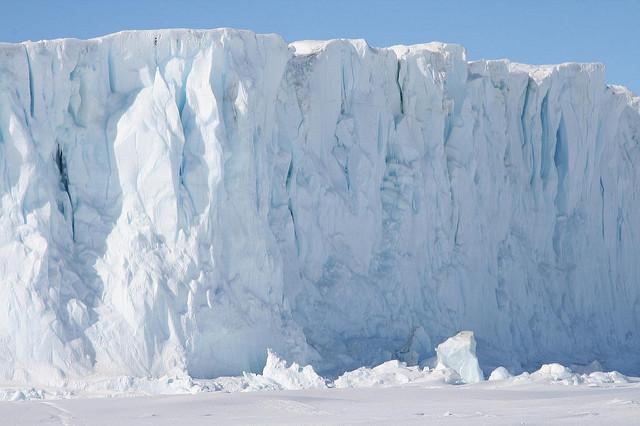
Advocates for a greater commitment by Australia to its Antarctic territory have welcomed the announcements of an Australian Antarctic Strategy and 20 Year Action Plan, as well as the signing of a contract for the construction of a new icebreaker.
The strategy talks about Australia being a logistics collaborator of choice in east Antarctica. But what if collaboration extended to the polar regions in general, not just part of Antarctica?
When it comes to the Antarctic, Australia has more in common with Canada than would be initially expected. While the Australian continent doesn’t contain any polar zones, it claims a large section of Antarctica in an area known as the Australian Antarctic Territory. As shifting geopolitics shine a spotlight on the growing long-term security challenges to both nations’ polar regions, Australia should look toward closer collaboration with Canada to advance shared interests on the frozen continent.
Like a great deal of existing Australia–Canada collaboration, it’s already beginning to occur informally. During the recent expansion of the resources sector, the links between Perth and Calgary thickened at a rapid pace as competition for skilled workers increased and energy and related service companies’ developed footprints in both energy capitals. Political links have also been strengthened in recent years. Connections on a personal level are growing, with a number of Australians and Canadians quietly working together. These flows are largely unstructured and relatively common because of the similar experience in dealing with harsh, remote locations and the tyranny of distance.
Like Australia, Canada shares a British legal and cultural heritage within a federal parliamentary system. The two countries’ military history has long been characterised as operating within what were initially UK and now US-led military coalitions. As major commodity exporters with small, unevenly distributed populations across large landmasses, both countries have remarkably similar international outlooks and policy challenges. For these reasons, collaboration between Australia and Canada has already been mooted in terms of energy and climate policy.
For decades, the approach by each country to their own polar region has been through multilateral agreements and gatherings of diplomats and scientists. For Australia, it has been the Antarctic Treaty; for Canada, it’s the Arctic Council. With an emphasis on science, the environment and consensus, both regimes have proved remarkably successful during their tenure. However, the security environment is changing.
Both countries are confronting major challenges to their respective longstanding claims and influence over the Arctic and Antarctic. The shift to a more multipolar world is leading to greater levels of resource competition in both regions. The first decade of the 21st century has already seen the divergence between a camp of largely Western nations who viewed polar regions as a site of scientific and environmental collaboration and an alternate group—including China, Russia, India and Brazil—that are seeking more influence and access to the regions’ resources.
For Australia, maintaining its pre-eminent position in Antarctica will become more difficult in the coming years, as will ensuring that the continent doesn’t become a contested southern flank. For Canada, the possibility of resource riches and an opening of the fabled Northwest Passage sea route between the Atlantic and Pacific Oceans offers both an opportunity for future prosperity and a challenge. While they are advanced, capitalist democracies, both Canberra and Ottawa are limited in the resources they can commit to advancing their own interests in each polar region.
Building upon a foundation of commonalities, we recommend that the two countries leverage each other’s military and diplomatic capabilities in three areas: personnel exchanges, joint procurement, and the mutual recognition of territorial claims.
With formalised personnel exchanges, Australia can benefit from Canada’s decade-plus experiences in regular naval and coast guard operations in the Arctic. If Canberra is to create and maintain the capabilities necessary to perform search and rescue operations in the Antarctic—because of a cruise ship accident or a research station emergency—and to say nothing of resource challenges, Australia needs a reservoir of knowledgeable and experience polar personnel. As such, Australia should start sending RAN and RAAF personnel on rotations with Canadian Armed Forces units performing regular operations in the Arctic. Opportunities also exist to share expertise in strategic planning at the bureaucratic level, between Canada’s Department of National Defence and Australia’s Department of Defence.
With procurement, the different hemispheric calendar cycle allows for Canada to possibly rent out Australia’s soon-to-be built icebreaker while Ottawa awaits the building of the CCGS Diefenbaker. Such a scenario is within the realm of possibility considering the Canadians are already in temporary rental agreements with Chile and Spain for auxiliary oil replenishment ships.
Finally, both countries stand to benefit in mutually recognising each other’s territorial claims in the Antarctic and Arctic, respectively. Considering the limited number of countries recognising Canberra’s claims and the fact that no nation recognises Ottawa’s polar claims, a small but nevertheless significant diplomatic victory could be achieved, paving the way for possible additional international recognition by other states.
While none of these recommendations is a fail-safe from great power contestation in the Arctic and Antarctic, both countries need to maximise their limited resources to ensure their interests are sustained at both poles.